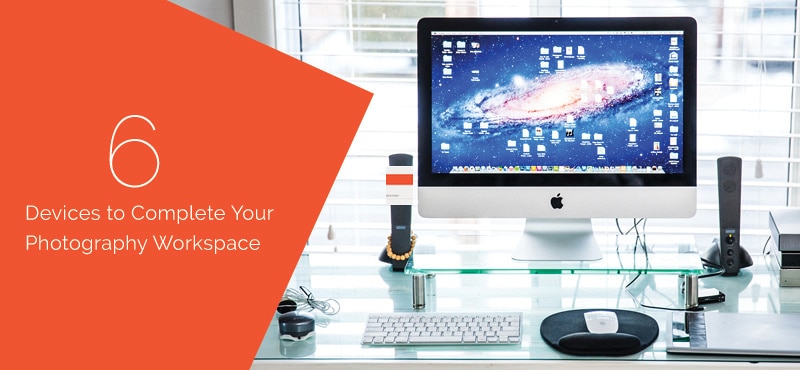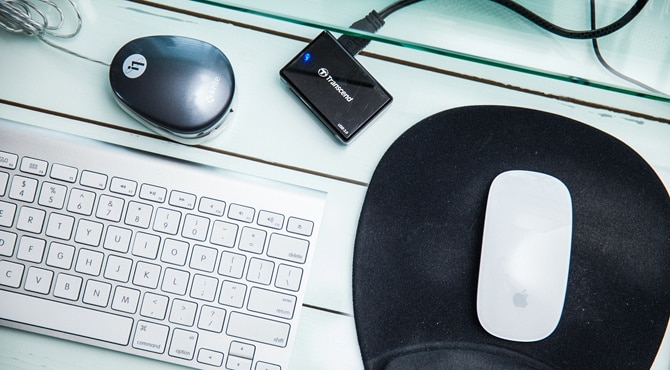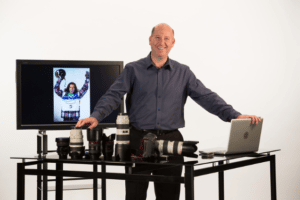6 Tech Devices to Complete Your Photo Editing Workspace
March 16th, 2015
We know that a successful photo shoot starts with your camera… but it doesn’t end there. Several peripheral devices can help improve the quality of your images, your editing workflow, and your comfort level while at a desk. Read on to discover some devices you should consider adding to your photography workspace to maximize productivity.
1. Card readers
Some computers have card readers built right in. Mine has a SD port, but my primary camera uses CF cards, which requires me to have a card reader to transfer files to the computer. Card readers come in all shapes and sizes, but I recommend choosing one that reads multiple types of memory and has a fast file transfer rate, either through USB 3 or another fast port. I have a card reader that reads SD cards and CF cards. That way, I can transmit multiple data at once if I’m using both types of memory. Make sure the cable is long enough to be convenient for you to use.
2. Pen tablets
I use a large Wacom tablet, which connects to my computer via USB. I mostly use it with Photoshop to give me the maximum level of control and comfort when I’m performing edits or retouches to photos beyond Lightroom. The pen is very responsive to my movements and helpful for masking and blending layers with precision. It also helps reduce fatigue from using a mouse for a long period of time.

3. Color calibrator
Color calibration measures the accuracy of the colors and brightness of your image. Computer monitors and cameras can skew color temperature, affecting the way you color correct images in programs such as Lightroom or Photoshop. A properly calibrated monitor is essential to ensure that my final images look the way I want, with especially accurate skin tones, when they are printed or otherwise displayed.
4. Second monitor
If you work on a laptop, use many palettes at once, or simply want more room to work on images, a second monitor may be the best solution. For minimal cost, you can separate out your digital desktop and also have a new way to present work to clients. Just remember to use your calibrator so you have matching monitors!
5. External hard drive
Hard drives are helpful for backing up files, taking files with you, or having added storage space. Flexibility is key in this job, so having my office with me wherever I go is really helpful—and external hard drives make this possible. I’d recommend buying a case for the portable ones, though—they are fragile!
6. Printers
Photography requires printing, whether it’s a shot list or a photo from a recent event. I have multiple printers available—the main one is a standard inkjet printer/scanner that is good for labels, proposals and records. I also have several smaller photo printers for glossy prints. Printers give you flexibility when you don’t have time to develop photos in a shop and are necessary to the basic functions of the photography business.
FREE guide: Understand exposure for better photos fast!
Download the free beginner photography guide Understanding Exposure for Better Photos and learn the basics of manipulating depth of field and shutter speed.
* * *
 Nicholas Donner is a Washington, DC-based photographer and artist who loves expanding his knowledge of light and composition, and trying out the latest technology and software. His portfolio includes portraits of star athletes and musicians, magazine covers, destination and U.S. weddings, landscapes and architectural photos.
Nicholas Donner is a Washington, DC-based photographer and artist who loves expanding his knowledge of light and composition, and trying out the latest technology and software. His portfolio includes portraits of star athletes and musicians, magazine covers, destination and U.S. weddings, landscapes and architectural photos.



